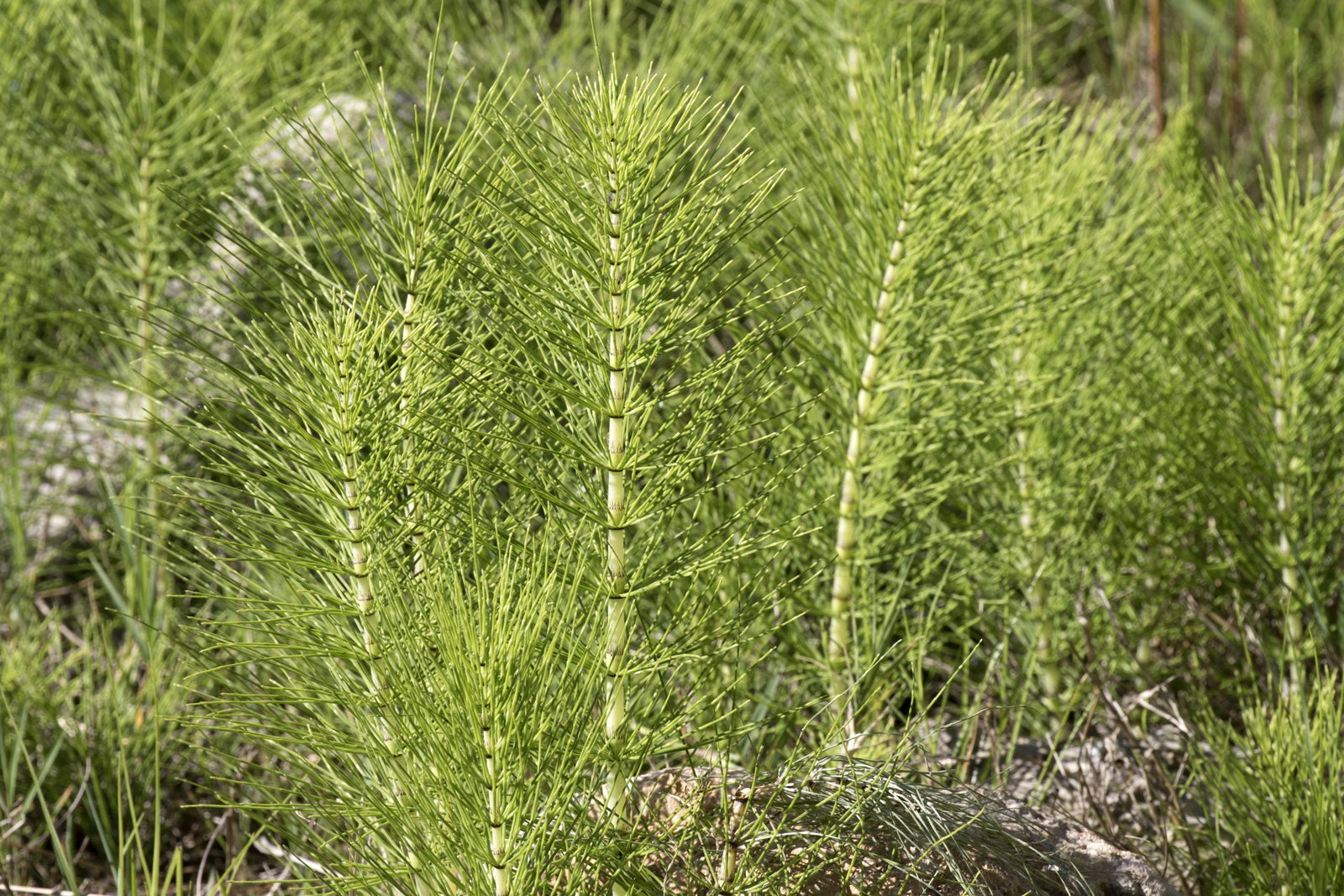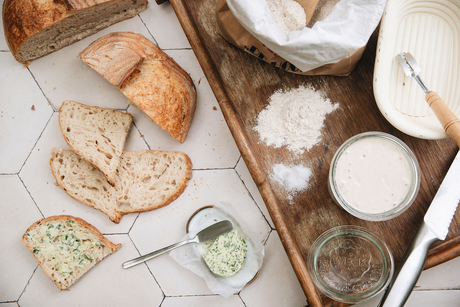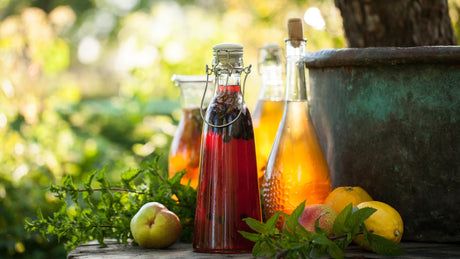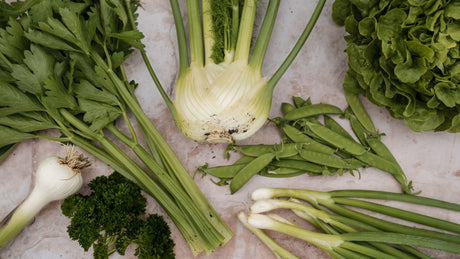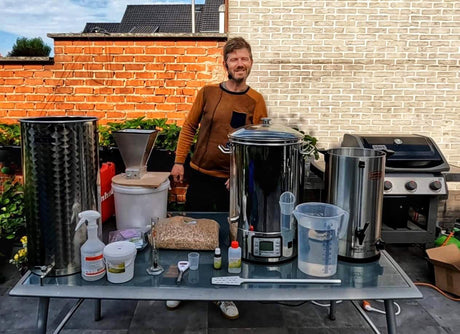Combat horsetail ? Yes, but first listen to what the plant tells you about your vegetable garden
Introduction to horsetail control
horsetail or also called horsetail is a plant that has driven many gardeners and vegetable gardeners crazy. And as many people think, you have to combat something that does not belong there in the first place. You should look up combating horsetail via an internet search engine. The lists of chemicals are endless and the words 'horror', 'kill', ... set the tone. horsetail is however part of our eco-system and when that is not in balance horsetail comes peeping. A fascinating story in which horsetail is not a tormentor but a servant of mother nature who wants to tell you something. You can adjust your eco-system so that horsetail disturbs your vegetable garden activities less. The good news is that it also benefits the rest of your vegetable garden.Who is that horsetail plant?
horsetail grows in poor soil
Horsetail ( Equisetum arvense) is a plant from the horsetail family, which is also related to ferns. The plant has a very deep root system that also spreads strongly horizontally. It is important for the vegetable garden to know that horsetail grows on poor soil. After volcanic eruptions where the entire soil is exhausted or when a large building is demolished where the soil nutritional value is almost zero, you often see horsetail peeping first. horsetail grows on poor soil
horsetail grows on poor soilhorsetail is poisonous to some other plants, not to humans
Not only does horsetail get in the way in the vegetable garden, it takes light and water away from other plants, it is also poisonous to many plants. For example, you will never see grass next to horsetail . horsetail is also poisonous to horses, cynical that horsetail is nicknamed horsetail, right?Combating horsetail with chemicals does not work
Because of its root system and its ability to grow back even the strongest chemicals do not work to kill the 'weeds'. Glyphosate products like Roundup, which for me do not belong in the vegetable garden, are no match for horsetail . It grows back. Horsetail is hell for non-organic gardeners because their only means against unwanted weeds are often chemicals. We organic gardeners know better tricks that are also more sustainable and better for the environment.
The benefits of horsetail
Free protection against mold and lice
Horsetail is not all doom and gloom. You can make horsetail slurry from horsetail , just as you can make nettle slurry and comfrey slurry . Horsetail contains silicon or silicic acid. It creates a protective layer that fungi and aphids have a hard time with. Make the slurry from young horsetail plants, which do not yet contain spores. Just like ferns, horsetail is a spore plant.Fighting horsetail or making tea, it's a fine line
Horsetail was already used in ancient times as a medicine. An infusion or tea of horsetail would repair damaged tissue, both cell walls and bone structure. A nosebleed or a fracture ... horsetail tea would be a good solution. Horsetail would also be used in homeopathy. But since this is not a website for alternative medicine but for the vegetable garden, I will not go into this further. Inform yourself well before taking anything. horsetail tea
horsetail teahorsetail good for hair and skin
Many products for a better skin contain horsetail . This is also because horsetail contains silicon, antioxidants and other components for a healthy skin. It is said to be good against acne, eczema and psoriasis.How to Adapt to Invasive Horsetail
The answer is actually already in a chapter higher in this article. Horsetail grows in poor soil. Well then we make it biologically richer, right?compost for more humus
A layer of 5 to 15 cm of weed-free compost not only suppresses the weeds, it is also converted into humus by your soil life. I wrote about this extensively in the Ebook My organic vegetable garden , I give it away for free here on this site. Humus ensures a better coherence in your vegetable garden soil of minerals, nutrients, organic material, ... it is the black gold of the vegetable garden.lava flour and lime for more superficial minerals
Soils without minerals fall prey to horsetail . The reason for this is that horsetail is one of the only plants that can search so deeply into the ground for minerals. Other plants have more difficulty with this and therefore die faster with horsetail nearby. A good dose of lava meal and seaweed lime are also essential building blocks in the suppression of horsetail . seaweed lime Fossil Viano
seaweed lime Fossil VianoYou can also combat horsetail by pruning it early in the season
Don't wait until the horsetail is half a meter high because then it is full of spores and it also spreads very strongly horizontally underground. So harvest the young horsetail horsetails in the spring and pull a manure from them for the plants that fall prey to fungi (courgettes, grapes, rose bushes, ...) and aphids (berry bushes, strawberries, peppers , paprika 's, ...) later in the year.Mulching always helps against weeds
In beds with perennials or where you plant larger plants, you can apply a layer of hay, straw or wood chips. They are converted into humus just like the compost above and also suppress weeds very strongly, including horsetail . Make friends with gardening companies or landscapers. In the pruning months they will be very happy that they can come to you with their chopped branches. I have two regular suppliers. In my garden I introduced 7 cubic meters of wood chips into my paths and beds during the winter of 2018-2019. Mulching helps
Mulching helpsFinally
Combating horsetail is a matter of and/and. A layer of seaweed lime will not do it. It is compost , seaweed lime , lava meal , young pruning and mulch . This way horsetail becomes one of your best friends because admit it, the tips I give here to adapt to horsetail are all building blocks of a natural, organic vegetable garden. If you found this article valuable, please share it with your friends using the social media buttons. You can support the operation of this website by purchasing your gardening supplies in our webshop . Thanks for reading this article and see you soon. Tom Myself in my vegetable garden

